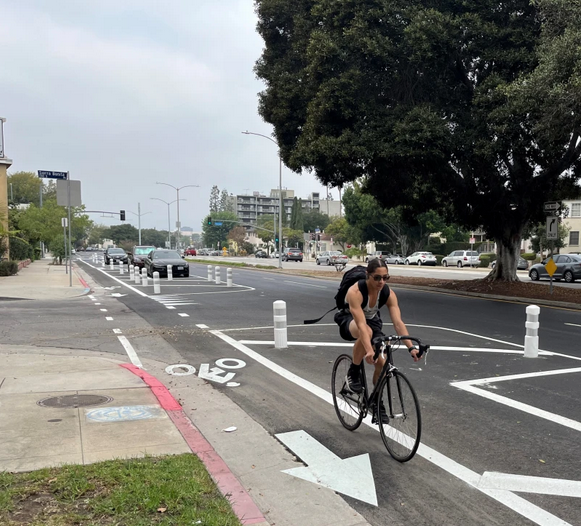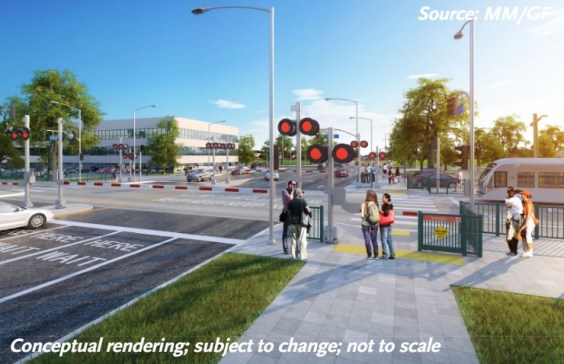Jonathan Matz of Safe Routes Partnership published an useful analysis of the recent Cycle 6 Active Transportation funding, which was announced last week by the California Transportation Commission.
The extra one-time, $1 billion funding boost allocated to the program by the state legislature made it possible to fund a lot more projects than otherwise would have been possible. But, notes Matz, the score cut-off - below which qualified projects did not receive funding - was still very high.
In Cycle 5, CTC staff had to turn away projects that scored below 92 of 100 points; in Cycle 6, the cut-off was 89. Even though more projects were funded than in Cycle 5, this high cut-off score is "proof that the ATP remains so heavily oversubscribed that even a fund of more than $1.6 billion is not enough to support a huge portion of the best walking and biking projects in the state," writes Matz.
Without the augmentation, of course, ATP Cycle 6 would have been so competitive that it would have been functionally inaccessible for the vast majority of applicants in the state: the threshold score for funding in the Statewide competition would have been a 95, with funds to support only 23 projects, and the threshold score n the Small Urban/Rural would have been 92, only supporting 7 projects.
Matz notes that one of the reasons the ATP is so extremely competitive is because the projects that are applying for funding are trending larger and more costly.
This was manifested differently in Cycle 6 than in Cycle 5, however: whereas in the previous cycle, medium infrastructure projects consistently were $2-3 million more expensive than in prior years, gradually chipping away at the available funds, in Cycle 6, the largest projects starkly outperformed all other categories.
The data can’t tell us why the large applications are performing so much better, but it is plausible and maybe even likely that the potential for mode shift is inevitably much more obvious for projects that cover more ground and/or include more impactful (and more expensive) road treatments.
(Editor's digression: This points to one of the flaws in the ATP - that projects are scored in part on whether they will induce people to use them. Unlike other transportation infrastructure built and supported by the state - freeways, for example - there is a pernicious double standard that says that bike lanes and sidewalks must prove they are worthy in specific ways, and not simply useful to people who need them or desirable amenities.)
Matz notes as well that projects that combined infrastructure - such as sidewalks and bike lanes - with non-infrastructure elements - educational programs and events - tended to receive higher scores than those that did not. This is particularly true with smaller projects. Matz offers a few thoughts on why that might be so.
He also notes the lopsided geographic distribution of projects that were awarded funding in the Statewide and Small Urban and Rural categories just announced. Southern California agencies submitted far more applications, and received about a third of the total number of awards, although other regions also did well.
Read his analysis here. General information about the ATP allocations and the project lists are available at this previous post.
Note too that one more group of awards has yet to be announced. The largest Metropolitan Planning Organizations receive funding by formula, based on population. Each MPO submits its own list of projects, and each handles that differently. Some MPOs, for example, simply submit the same list, so those at the cut-off point in the statewide competition will start out at the top in the MPO category.
But not every MPO does it that way. In the Bay Area, for example, the Metropolitan Transportation Commission uses its own scoring criteria, based on regional priorities. So there's no guarantee that the projects just at the cut-off under the CTC's criteria will be awarded funds this cycle, even with that extra $1 billion.





